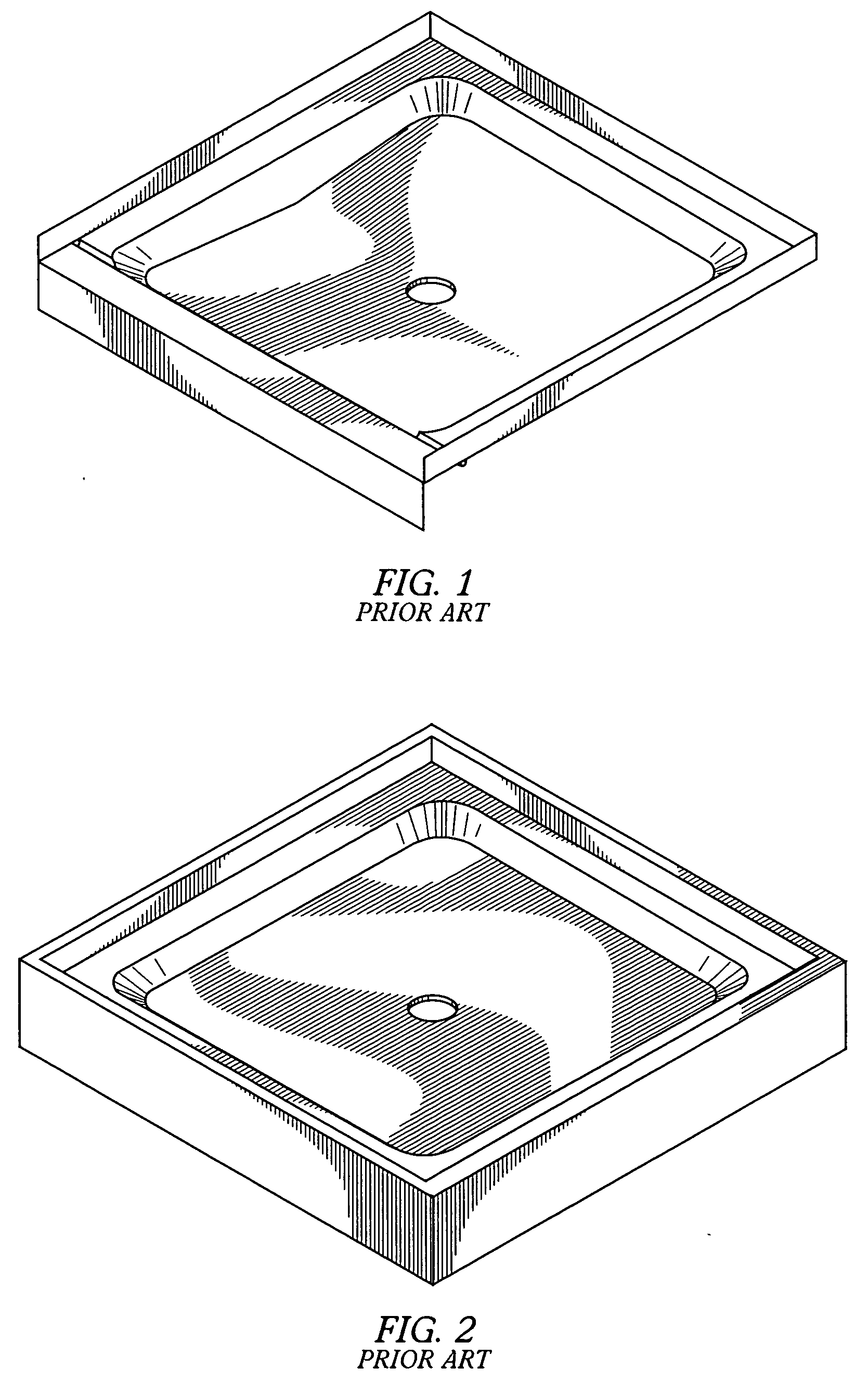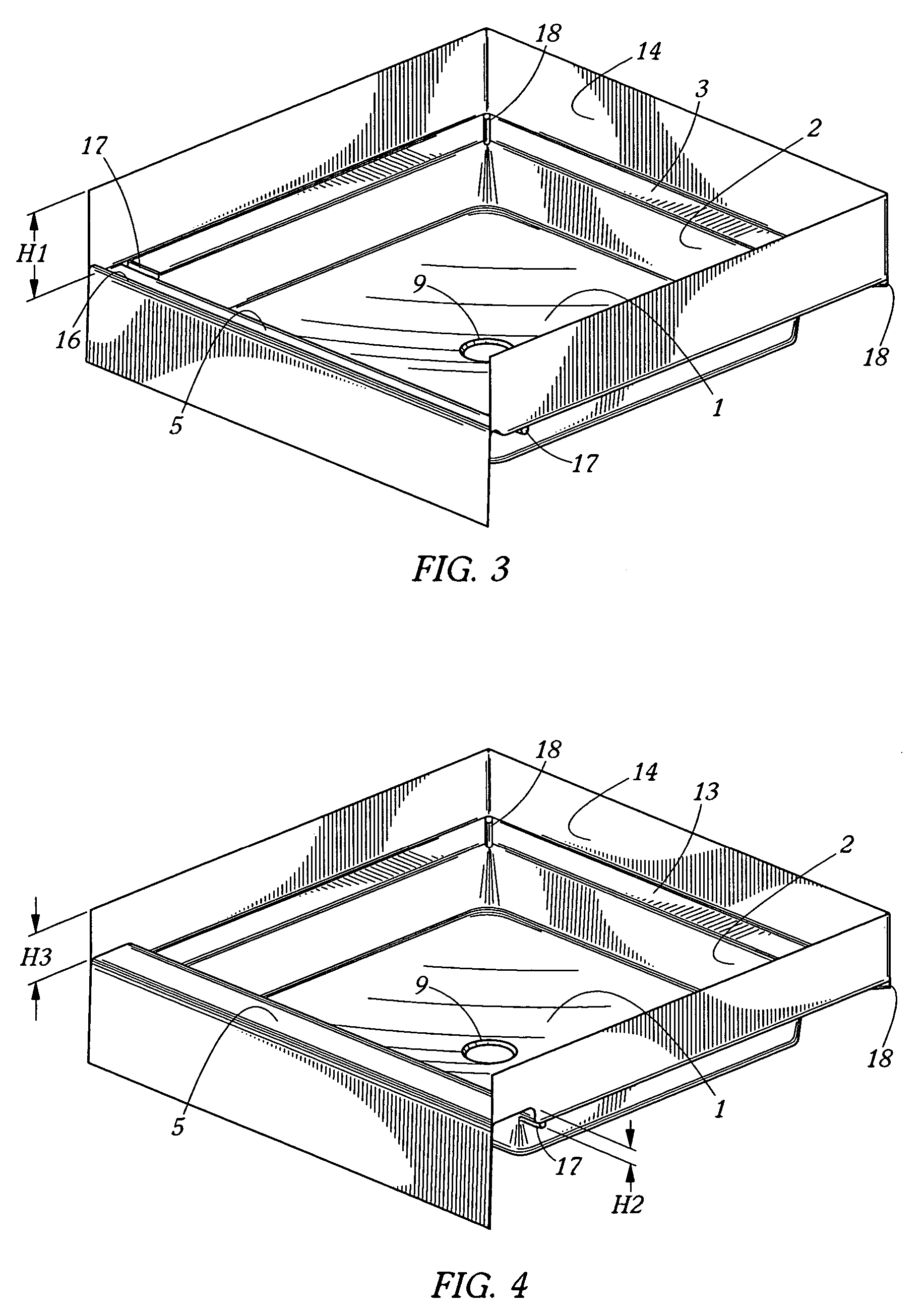Shower receptor
a technology of shower pan and shower head, which is applied in the field of shower pan or shower head, can solve the problems of water leakage problems of all tile and stone walls with grout lines, leakage and passing water, and grout lines are not waterproo
- Summary
- Abstract
- Description
- Claims
- Application Information
AI Technical Summary
Benefits of technology
Problems solved by technology
Method used
Image
Examples
second embodiment
[0028] Referring to FIG. 4, the invention is shown having similar base 1, sidewalls 2, and flange 14 at height H3 above threshold 15. Ledge 13 again extends laterally from the top of sidewall 2 on three sides of the base. In this embodiment of the invention, however, the ledge 13 is disposed lower in elevation with respect to the base than threshold 15. The difference in height H2 between ledge 13 and threshold 15 may be up to about 6 inches. In one embodiment, H2 is in the range from about 2 inches to about 5 inches. By disposing the ledge lower than the threshold, or in other words the threshold higher than the ledge, water trapped behind the tile wall of the shower is prevented from escaping the shower receptor when flowing horizontally along the ledge. In cooperation with the improved water-trapping ability of the higher threshold and lower ledge, weep valleys 17 and 18 provide greatly improved means of directing trapped water back into the base of the shower receptor. In an emb...
third embodiment
[0029] Referring to FIG. 5, a cross section of a third embodiment is shown having similar base 1, sidewalls 2, and flange 14 at height H3 above threshold 15. Again, curb 16 is shown extending upward from the outer edge of threshold 15. In this embodiment of the invention, a more complex ledge area 23 extends laterally from the top of sidewall 2 on three sides of the base. Ledge area 23 comprises two steps 21 and 22. First step 21 is disposed lower in elevation with respect to the base than second step 22. First step 21 is also closer to the base than second step 22. Both steps may be sloped toward the base to facilitate drainage of water toward the base. The amount of slope is not particularly limited but may be up to about six degrees or more. In this embodiment of the invention, ledge area 23 is disposed lower in elevation with respect to the base than threshold 15. The difference in height H2 between ledge 23 and threshold 15 may be up to about 6 inches. In an embodiment of the i...
PUM
 Login to View More
Login to View More Abstract
Description
Claims
Application Information
 Login to View More
Login to View More - R&D
- Intellectual Property
- Life Sciences
- Materials
- Tech Scout
- Unparalleled Data Quality
- Higher Quality Content
- 60% Fewer Hallucinations
Browse by: Latest US Patents, China's latest patents, Technical Efficacy Thesaurus, Application Domain, Technology Topic, Popular Technical Reports.
© 2025 PatSnap. All rights reserved.Legal|Privacy policy|Modern Slavery Act Transparency Statement|Sitemap|About US| Contact US: help@patsnap.com



